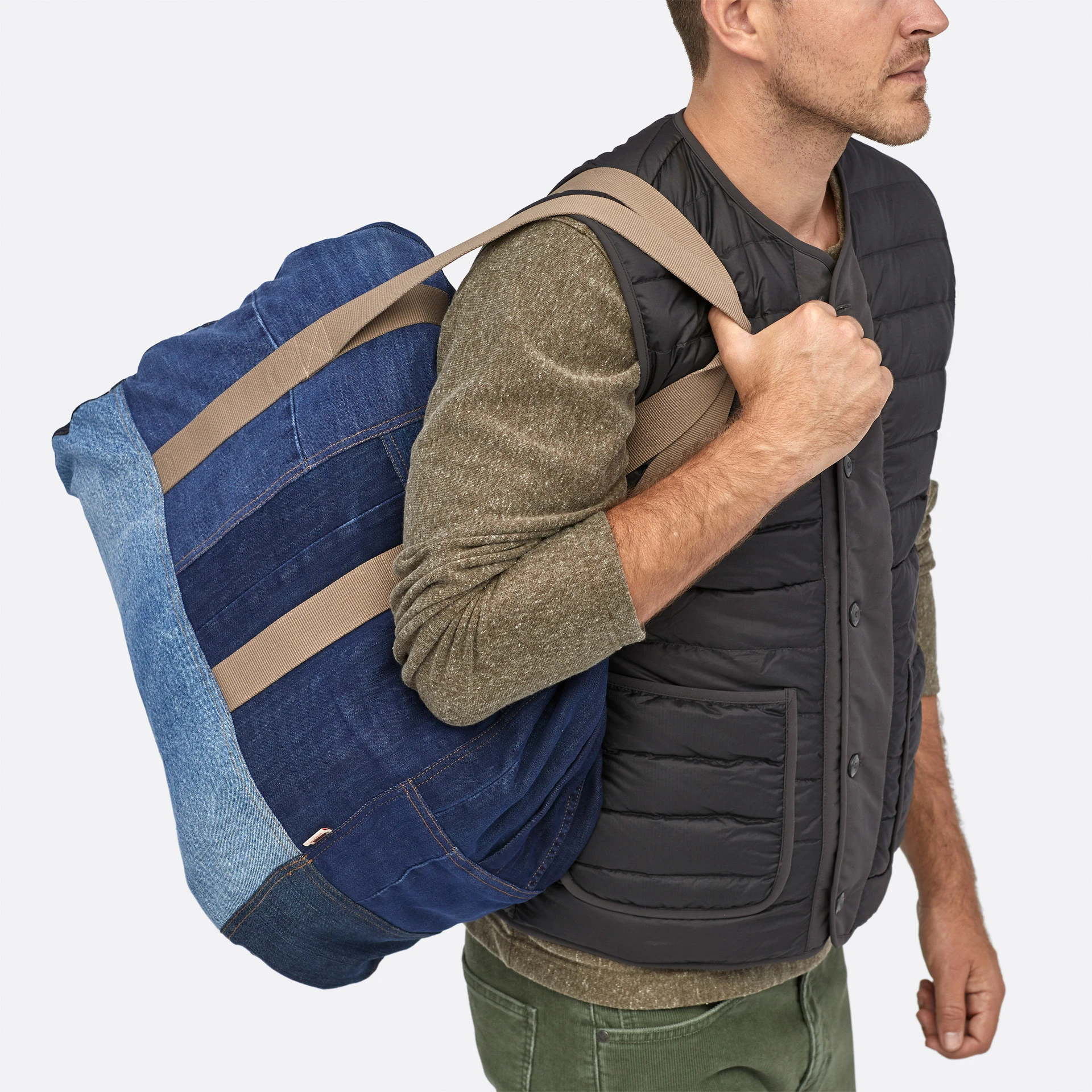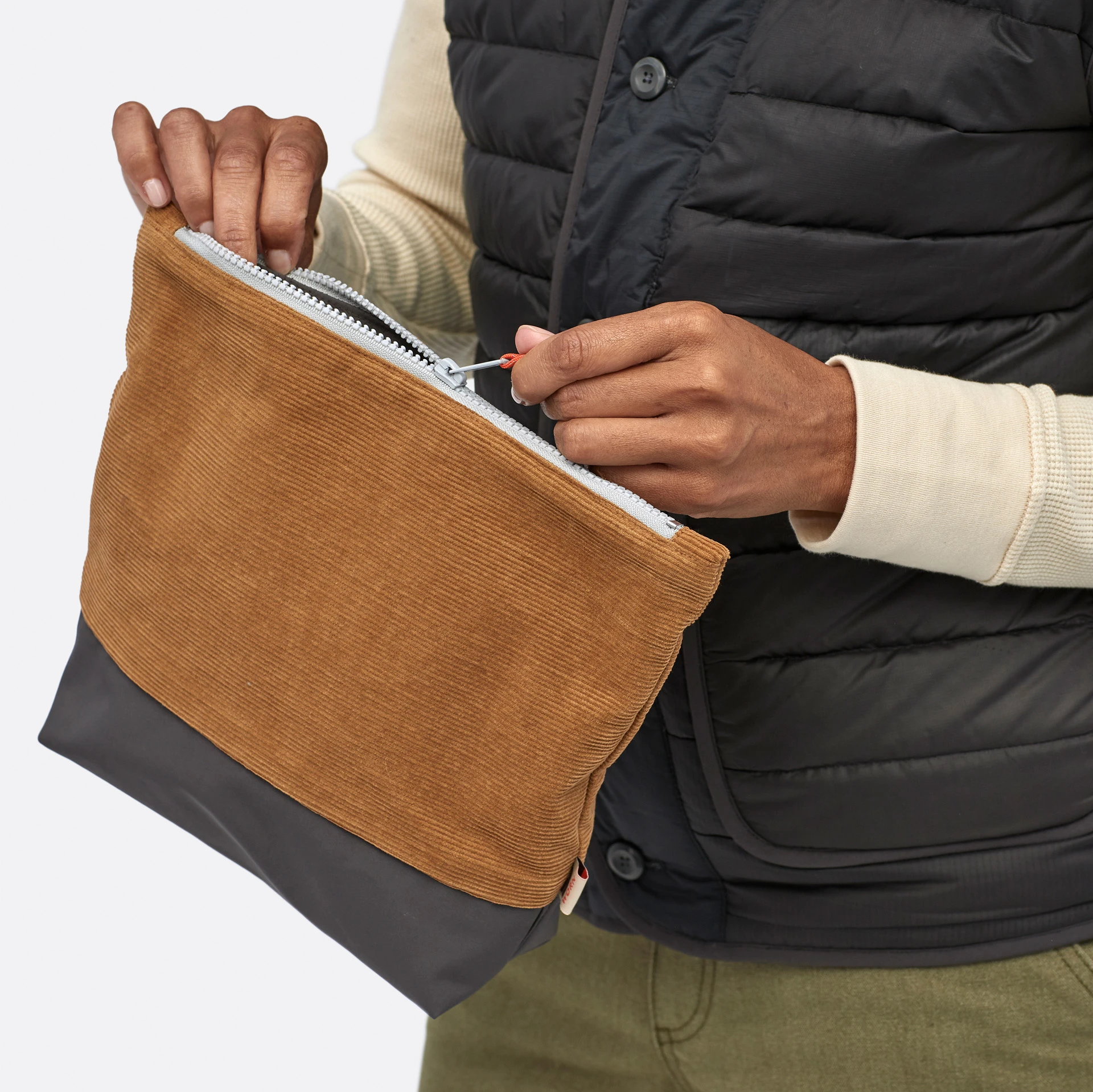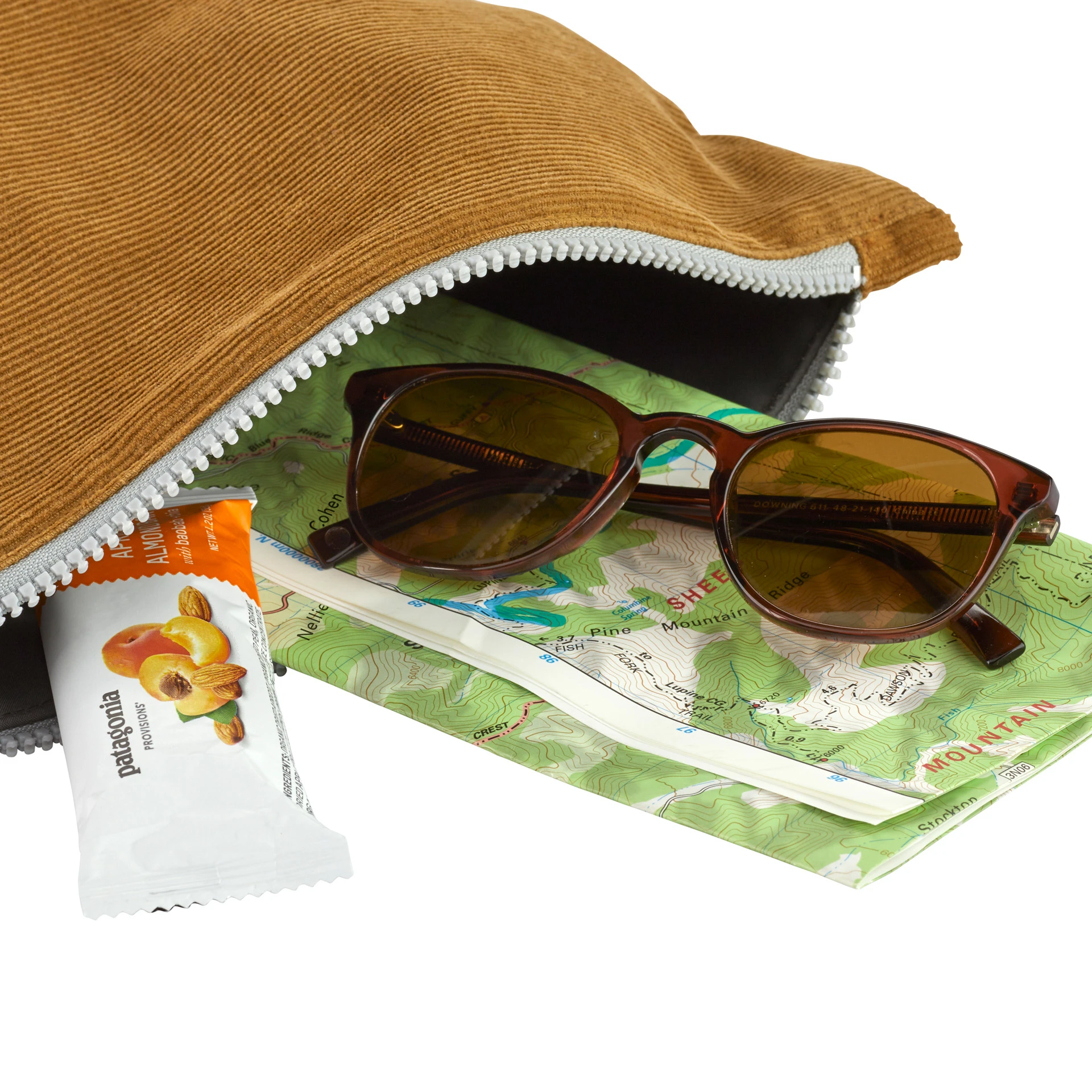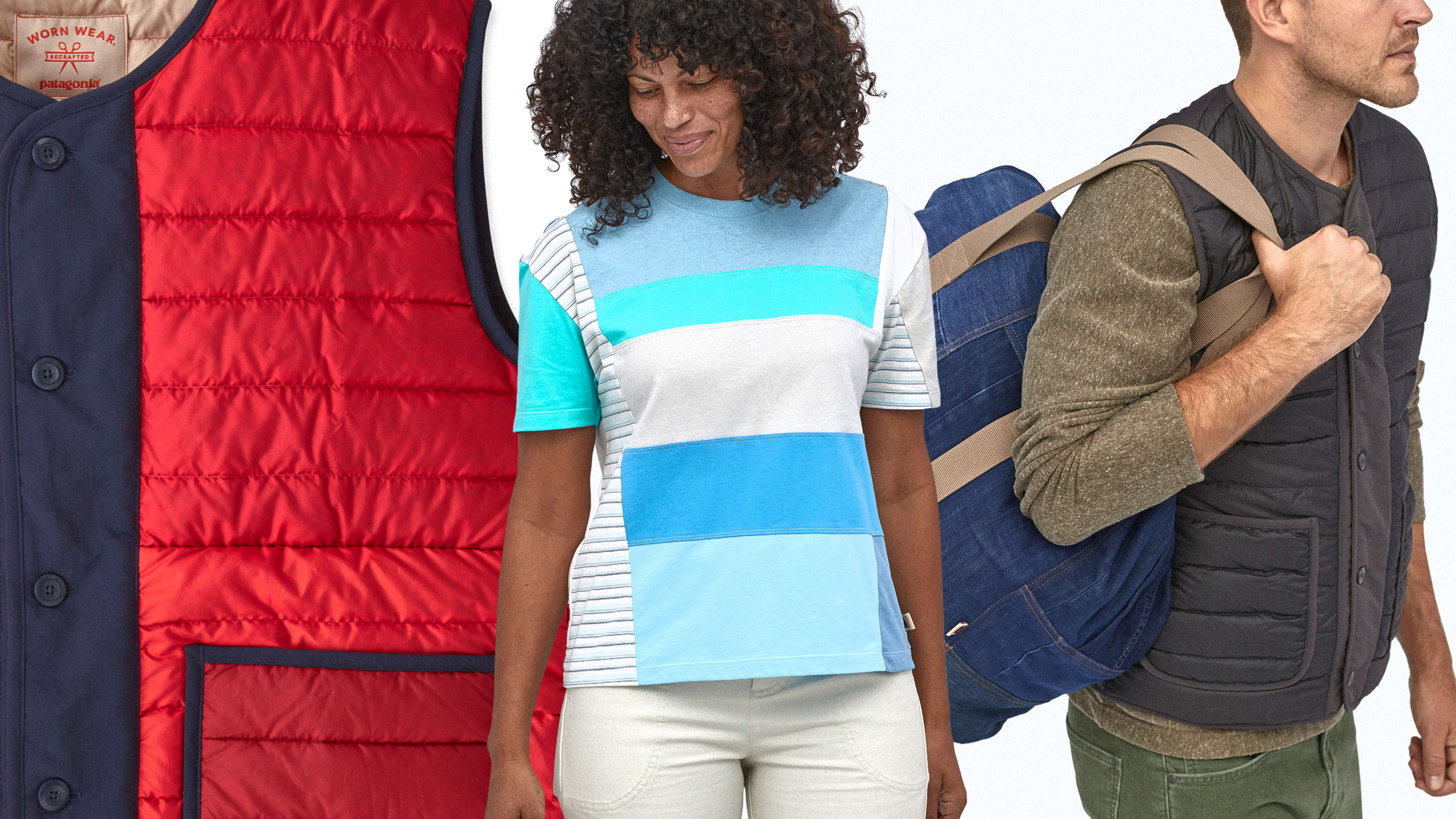There’s something sad about an article of clothing reaching the end of its life. After the fabric wears out and it develops a couple of holes, its owner will throw it in the trash. The garment will then sit in a landfill, where the organic fibers will biodegrade and the synthetic ones will just degrade into tiny particles, never fully decomposing.
Patagonia is trying to make the afterlife of its garments more exciting: When a customer begins to spot wear and tear on a puffer jacket or fleece vest, they can bring it back to a Patagonia store to have it repaired. If they don’t use the item much anymore, they can give it back to Patagonia, which will refurbish it and sell it on Worn Wear, a marketplace of second-hand products that launched in 2017.
But what about pieces that are truly beyond repair? Those are the clothes Patagonia is focusing on with the launch of a new line called ReCrafted.

The line takes worn-out, damaged goods and transforms them into entirely new, one-of-a-kind products at a workshop in Los Angeles. Each item in the ReCrafted collection is made up of between three and six pieces of used clothing.
“The ReCrafted line was an answer to a question,” says Kourtney Morgan, Patagonia’s senior designer, in a video to launch the line. “And the question was: What are we doing with all the products we are taking back that isn’t recyclable, that isn’t resale-able, and that isn’t repairable?”
The first series of items consists of down jackets and vests, a sweater, a T-shirt, a toolkit, and four bags, all available on Patagonia’s Worn Wear website for prices that range from $27 to $327. The aesthetic, unsurprisingly, feels different from the traditional Patagonia line: They feature a kind of bricolage effect, with fabrics of different colors and textures stitched together.

This is just the latest part of Patagonia’s broader strategy of keeping garments in circulation for longer. When it comes to the fashion industry, the bulk of carbon emissions happens early in the supply chain, in the production of raw materials and manufacturing in factories. The longer an item is used, the lower its environmental footprint. Many companies are now trying to extend the lifespan of a garment by ensuring it lives on in a secondary market. Platforms such as ThredUp and PoshMark allow consumers to sell their products to other people. Brands like Patagonia, Eileen Fisher, Arcteryx, and Taylor Stitch have their own marketplaces for secondhand goods, all of which are powered by a company called Yerdle, which helps brands create resale sites.

But for goods that simply cannot be resold or repaired, programs such as ReCrafted can help these items live on a little longer. Patagonia isn’t the only brand doing this. Eileen Fisher has a similar program, called ReNew, that takes back old clothes and turns them into new pieces.
The ReCrafted products are available starting today on the Worn Wear website, along with Patagonia’s first dedicated Worn Wear pop-up, which opens tomorrow in Boulder, Colorado—along with a repair workshop on-site.
Will such projects inspire other brands to launch similar programs? It’s hard to say. It takes a relatively large company, with plenty of resources, to redirect worn-out clothes and bring on designers to create new pieces. This may prove too much of a hurdle for many brands.
Recognize your brand’s excellence by applying to this year’s Brands That Matter Awards before the early-rate deadline, May 3.
















